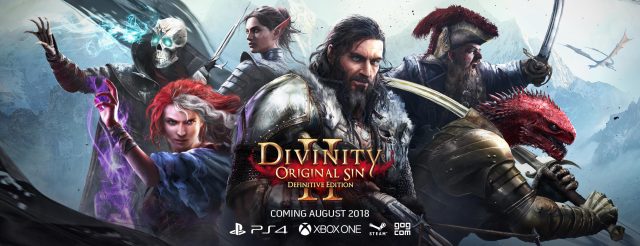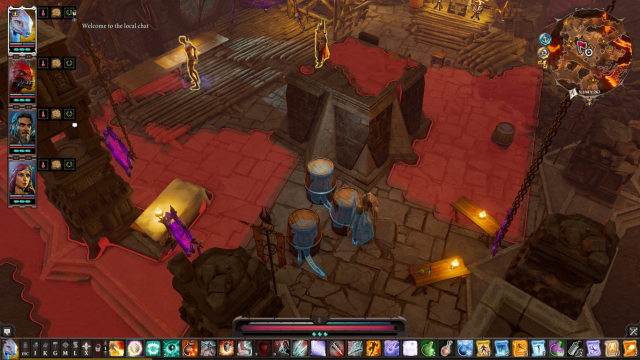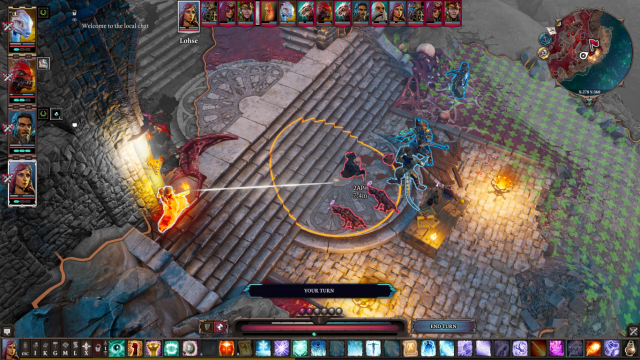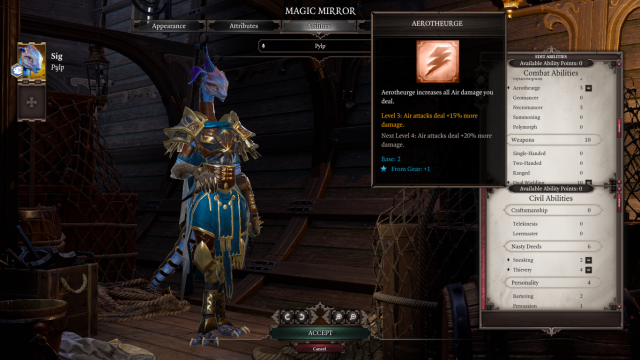
Divinity: Original Sin 2 is a role-playing game where you take control of a party of characters as they interact with the world through tactical combat, dialogue, and the players’ creativity. You build and customize the characters to excel in and out of combat, using a plethora of possible skill combinations. There are many ways to advance through the journey to become divine, each with their own methods and repercussions.
Elemental Tetrad:
Mechanics
Taking inspiration from classic party-based RPGs, Divinity uses a tactical turn-based combat, where characters use their attacks, skills, items and movement to try to reduce the enemies’ health to 0. To maximize party synergy, there are many possible roles a character can take. In Divinity, the player can use a classic party composition or go nuts and play as four fireball-casting wizards. The game rewards the player who takes advantage of the mechanics, while still allowing flexibility for players to play the game however they want.
Outside of combat, the characters can interact with the world through dialogue and moving objects. They can talk their way out of some combat encounters, teleport enemies to a less advantageous position, or sneak past enemies entirely. The exploration and combat takes place in the same world, allowing seamless interactions between the two.

Story
In Divinity Original Sin 2, the player starts as a prisoner who was captured for being ‘Sourcerers’ – individuals with great powers that are highly dangerous and unpredictable. The story follows them through their journey to escape and embark on a path to become divine.
In the beginning of the game, the player can select the background story of their character or define one of their own to make the character truly unique. Each of them will have their own quests and combat scenarios.
Aesthetics
Divinity takes place in Rivellon, a well-established fantastical world of elves, dwarves and lizards. The adjustable top-down isometric view gives enough space to admire the varied environments, from the otherworldly Hall of Echoes to the ruins of the Hollow Marshes. The detailed 3d character models and animations makes everyone unique, complete with full voice acting. In addition, each player character gets a unique instrument that plays in every major occasion in the story. All in all, the game is a very immersive experience, allowing the user to role-play effectively along with the story.
Technology
This game makes use of its own engine, the Divinity Engine 2. It has a lot of similarities to the more modern party-based RPGs, but polished to a very high standard. Big areas are loaded at once, enabling seamless travel to immerse the player with the story and environments. The elements and world objects interact with each other; wood objects burn, oil slows down characters, being in the rain makes electric damage more deadly. All of these can also be utilized by the intelligent AI, making them a worthy challenge to the player’s party.
Lens 8. Problem Solving
For any situation in Divinity, there are different methods to get through them. The most common is to defeat some enemies in combat, and it is definitely the one aspect Divinity has done best. Before any combat even starts, you need to allocate your characters’ attributes like strength, intelligence, constitution, etc. to make sure the character fits a role in the party. Maybe the enemy focuses on fire damage, so you should learn fire resistance skills before the fight.
During combat, you have access to all your skills and items you’ve collected. Having good preparations is important, but the player will need to adapt their strategies on-the-go with the ever-changing battlefield. No fight in this game is trivial (unless you are over-leveled), as each fight brings something unique to adapt your tactics against. The result is a very rewarding experience after every fight.

Lens 32. Goals
At first, the characters’ goal is to escape their unjust imprisonment. As the game progresses, their goals shift to a much grander scheme that impacts the whole world.
As for the player, their ultimate goal is to advance the story to completion using whatever means possible. The advancement will be guided by the quest system, which records past events so players won’t get lost after forgetting what happened. Alongside the main story are several side-quests, each with their own rewards in the form of items, gold and XP, which enables the characters to do even better in other quests. Many of the quests are interconnected and resolves the same story arc, giving a satisfying conclusion when everything is done.
Lens 54. Accessibility
Unfortunately, the phletra of options in the game makes playing for the first time really intimidating. It was so inaccessible that a tutorial had to be added through an update after the initial release.
Unlike traditional RPGs, the characters aren’t limited to a “class” or “job” system. Instead, the player has to manually choose every progression attributes, skills, and talents, all of which are available from the beginning of the game. Multiply that for up to 4 characters in your party, and figuring out an optimal build is almost impossible without outside resources.

Lens 85. The Avatar
As a traditional role-playing game, players get to create their own character(s) or pick a preset character with an origin story. Each character also gets “tags”, which determines their background and therefore their dialogue options when facing certain situations. Someone with the ‘scholar’ tag will be able to decipher forgotten languages, while someone with the ‘outlaw’ tag will have certain underground connections with other outlaws.
In addition, many of the dialogue options are chosen by the player, some of which have major implications. This way, the player can project their actions to their character and see the results of their actions.

